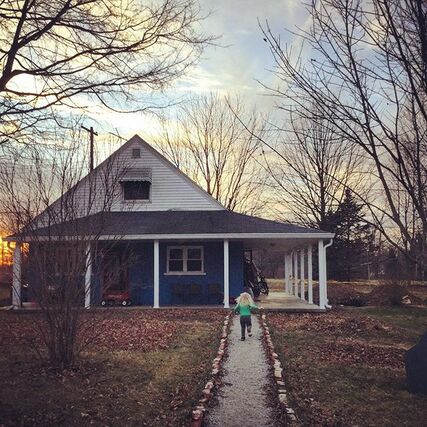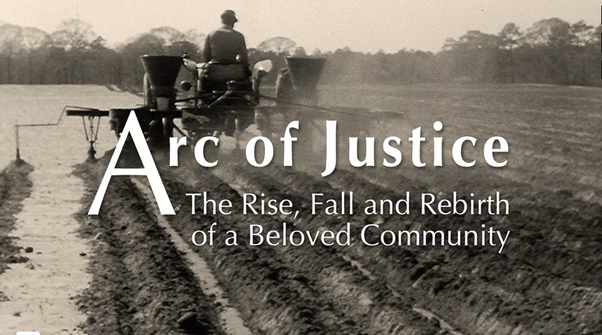The Community Land Trust Model (CLT)
|
Community Land Trusts are community-based membership organizations whose missions include permanent stewardship of land for community benefit and perpetual preservation of assets such as affordable housing on that land for community benefit.
In short, Community Land Trusts use land to benefit the community, forever. Communities are able to have a say in their future. Through permanently affordable housing, Community Land Trusts create lasting economic inclusion for future generations. Community Land Trust homeownership is designed to balance a community's need for a stock of permanently affordable housing with equity-building opportunities for individual families. Post-purchase support is another hallmark of Community Land Trusts, which outperform the market in creating sustained homeownership opportunities. Yellow Springs Home, Inc. has not had a single foreclosure since founding. |
History of the Community Land Trust
The first modern CLT in the United States was established in Albany, Georgia, in 1969 by Robert Swann and Slater King, a cousin of Dr. Martin Luther King, Jr. Born out of the civil rights movement, the New Communities land trust consisted of more than 5,000 acres of farmland where African-American families, many poor farmers from the South, could affordably access, build on, and farm land at a time when the community faced significant obstacles to land ownership and financing. Five decades later, the number of CLTs in the United States has grown to more than 225, according to the Grounded Solutions Network. A longstanding commitment to promoting equity and inclusion remains a central organizing principle of the land trust movement, and many CLTs give residents and members of the surrounding community official roles on their governing boards. (Source)
The Arc of Justice
"The Arc of Justice" is the remarkable story of New Communities, Inc., the inspiration for hundreds of community land trusts in the US and worldwide. Click the image above, or click here, to watch the documentary online. The link will open in a new tab.
Yellow Springs Home, Inc. is a private, nonprofit corporation. Our purpose is to build and acquire affordable housing for persons who are poorly served by the prevailing housing market. Home, Inc. is also a member of the Ohio Community Development Corporation Association (OCDCA) and the Grounded Solutions Network. Home, Inc. became the first rural Enterprise Community Partner in Ohio in 2019. Founded in 1998, Yellow Springs Home, Inc. is a nonprofit organization whose mission is to strengthen community and diversity through permanently affordable and sustainable housing through our Community Land Trust.
Community Land Trusts, part of the Community Development Corporation family, also do many things beyond homeownership to benefit their communities through asset-building in areas such as rental housing, food access, financial empowerment and education, affirmative outreach, economic development and job creation, and more. The key programs Yellow Springs Home, Inc. offers include: client-first programs (rental services, pre-and post-purchase support, and financial empowerment coaching), repair grants and housing stability programming, in-house low interest mortgage packaging, affirmative marketing and outreach, inclusive coalition building, affordable rentals, and affordable homeownership opportunities.
Community Land Trusts, part of the Community Development Corporation family, also do many things beyond homeownership to benefit their communities through asset-building in areas such as rental housing, food access, financial empowerment and education, affirmative outreach, economic development and job creation, and more. The key programs Yellow Springs Home, Inc. offers include: client-first programs (rental services, pre-and post-purchase support, and financial empowerment coaching), repair grants and housing stability programming, in-house low interest mortgage packaging, affirmative marketing and outreach, inclusive coalition building, affordable rentals, and affordable homeownership opportunities.
How Does it Work?
The homeownership Community Land Trust (CLT) model is at the heart of our organization. To create permanently affordable housing, the CLT identifies a product suitable for first-time homebuyers of low-income, then acquires land and raises funds to bridge the gap between and affordable sales price and the cost to build or rehab the home. Typically 30-50% of the total development cost is invested as affordability gap funding through private and public donations and grants. The CLT then sells the home through a 99-year ground lease at an affordable price (below market value).
The resident owns the home and a 99-year renewable leasehold estate; the CLT retains the deed. Terms of the leasehold estate give the homeowner full use of the land, including the right to pass their home on to their children, while limiting the resale price of the home so that it will remain affordable to subsequent homeowners. Homeowners often step up from renting to have the stability and pride of homeownership while building equity, paying forward some of the help they received on to the next homebuyer when they sell the home.
The resident owns the home and a 99-year renewable leasehold estate; the CLT retains the deed. Terms of the leasehold estate give the homeowner full use of the land, including the right to pass their home on to their children, while limiting the resale price of the home so that it will remain affordable to subsequent homeowners. Homeowners often step up from renting to have the stability and pride of homeownership while building equity, paying forward some of the help they received on to the next homebuyer when they sell the home.
The Community Land Trust Model is being used by more than 250 well-established land trusts in the U.S. today.
Why Does Yellow Springs Need This?
In recent decades, Yellow Springs has become a premier place to live. Its success in building such an attractive community has driven the market value of land and houses beyond the reach of many people of moderate income who live here, work here, and grew up here. At the same time, nearly half of all renters are housing cost burdened, meaning they pay more than 30% of their income to rent. In Yellow Springs the Community Land Trust is a community stabilization tool and essential for an inclusive and resilient future.
Key Components of the Ground Lease
The ground lease is the legally binding agreement that gives a homeowner the right to use the land and improvements. It describes in full the rights and responsibilities of both the homeowner and the Community Land Trust (CLT), as well as the restrictions that govern the relationship.
- 99-Year Term - The lease is for 99 years, providing long-term security and access for the homeowner. The lease is also renewable by the homeowner- or his/her heirs - for an additional 99-year term
- Owner Occupancy - The homeowner must live in their house for a majority of each year
- Ground Lease Fee - The homeowner pays a modest monthly ground lease fee — currently $25 - to the CLT in exchange for access to and use of the leased premises, which helps with ongoing services
- Taxes and Assessments - The homeowner is responsible for the payment of all real estate taxes on the house and land
- Construction, Refinancing, Alteration - The homeowner is allowed to build additions to the house only with written permission. Refinance must be approved by the CLT.
- Resale- If a homeowner decides to sell, they must work with the CLT to try and sell to another income qualified buyer. The CLT facilitates these resales. The resale price is limited by a formula (see below) which allows the seller to recover the cost of the house plus a modest profit. The CLT has a first right of refusal.
The Resale Formula
The Community Land Trust (CLT) resale formula is designed to strike a balance between providing a fair return on investment to individual homeowners while limiting resale prices to a level that will ensure continued affordability to future income-qualified homebuyers.
The goal is to develop a growing stock of permanently affordable homes as a means of building long-term community and individual assets. Homeowners have the opportunity to earn wealth while paying forward some of the help they received when buying their home.
Using the appraisal-based method, the resale price is established as the lessor of: a homeowners’ percentage of ownership interest OR the base price (what the homeowner originally paid) plus 25% of the increase in market value at the time of the resale. Following is an example.
How Does the Formula Work?
When a homeowner first purchases their home and the 99-year ground lease, the CLT will have the house and land appraised together to determine the fair market value.
What does that mean for the seller?
To learn more and sign up for our homebuyer program, please click here.
The goal is to develop a growing stock of permanently affordable homes as a means of building long-term community and individual assets. Homeowners have the opportunity to earn wealth while paying forward some of the help they received when buying their home.
Using the appraisal-based method, the resale price is established as the lessor of: a homeowners’ percentage of ownership interest OR the base price (what the homeowner originally paid) plus 25% of the increase in market value at the time of the resale. Following is an example.
How Does the Formula Work?
When a homeowner first purchases their home and the 99-year ground lease, the CLT will have the house and land appraised together to determine the fair market value.
- A homeowner purchases the home for an affordable sales price of $120,000. A fair market appraisal shows an initial appraised value of $180,000. The homebuyers’ base price is $120,000, while their ownership interest is 67% ($120,000/$180,000). The home is made affordable by $60,000 in grants.
- The homeowner enjoys their home for several years before deciding to move on to a market rate home. At the time of the resale, the home and land will be appraised again. At this time, the fair market appraisal is now $200,000—an increase of $20,000.
- The resale formula price is the lessor of the homeowners’ percentage of ownership interest OR the base price plus 25% of the increase in market value.
- The percentage of ownership interest in this scenario is 67% of $200,000, or $134,000.
- The base price of $120,000 plus 25% of the increase in market value ($20,000 x 0.25) results in a sales price of $125,000. As $125,000 is less than $134,000, the new sales price is $125,000. The home remains affordable to the next seller, and there is now $75,000 of affordability in the home.
What does that mean for the seller?
- In our example, the house sells to a new low-income buyer for the affordable price of $125,000 (see above), a sales price of $5,000 more than what they initially paid.
- If the seller made a down payment of $5,500 and has earned $7,800 in equity by paying down the principle of their mortgage, then the seller will receive $18,300 at the time of resale.
- $18,300 to the seller = $5,500 (down payment) + $7,800 (equity) + $5,000 (portion of increase in appreciation).
To learn more and sign up for our homebuyer program, please click here.



